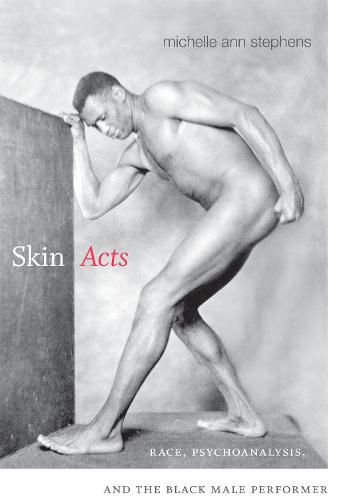Readings Newsletter
Become a Readings Member to make your shopping experience even easier.
Sign in or sign up for free!
You’re not far away from qualifying for FREE standard shipping within Australia
You’ve qualified for FREE standard shipping within Australia
The cart is loading…






In Skin Acts, Michelle Ann Stephens explores the work of four iconic twentieth-century black male performers-Bert Williams, Paul Robeson, Harry Belafonte, and Bob Marley-to reveal how racial and sexual difference is both marked by and experienced in the skin. She situates each figure within his cultural moment, examining his performance in the context of contemporary race relations and visual regimes. Drawing on Lacanian psychoanalysis and performance theory, Stephens contends that while black skin is subject to what Frantz Fanon called the epidermalizing and hardening effects of the gaze, it is in the flesh that other-intersubjective, pre-discursive, and sensuous-forms of knowing take place between artist and audience. Analyzing a wide range of visual, musical, and textual sources, Stephens shows that black subjectivity and performativity are structured by the tension between skin and flesh, sight and touch, difference and sameness.
$9.00 standard shipping within Australia
FREE standard shipping within Australia for orders over $100.00
Express & International shipping calculated at checkout
In Skin Acts, Michelle Ann Stephens explores the work of four iconic twentieth-century black male performers-Bert Williams, Paul Robeson, Harry Belafonte, and Bob Marley-to reveal how racial and sexual difference is both marked by and experienced in the skin. She situates each figure within his cultural moment, examining his performance in the context of contemporary race relations and visual regimes. Drawing on Lacanian psychoanalysis and performance theory, Stephens contends that while black skin is subject to what Frantz Fanon called the epidermalizing and hardening effects of the gaze, it is in the flesh that other-intersubjective, pre-discursive, and sensuous-forms of knowing take place between artist and audience. Analyzing a wide range of visual, musical, and textual sources, Stephens shows that black subjectivity and performativity are structured by the tension between skin and flesh, sight and touch, difference and sameness.